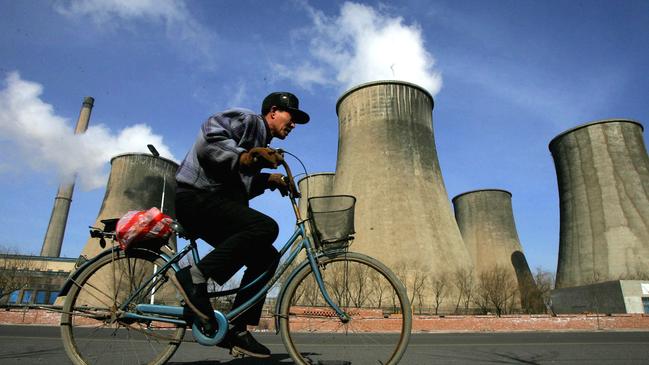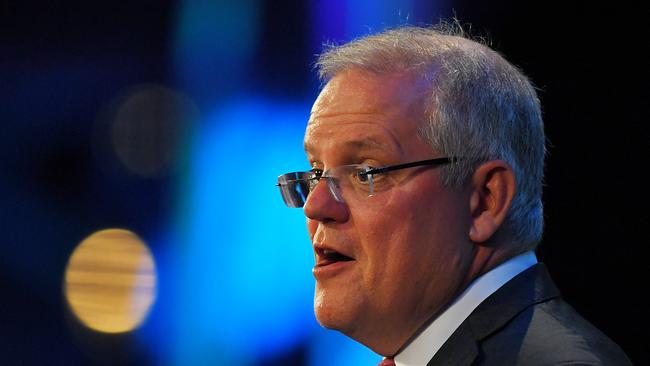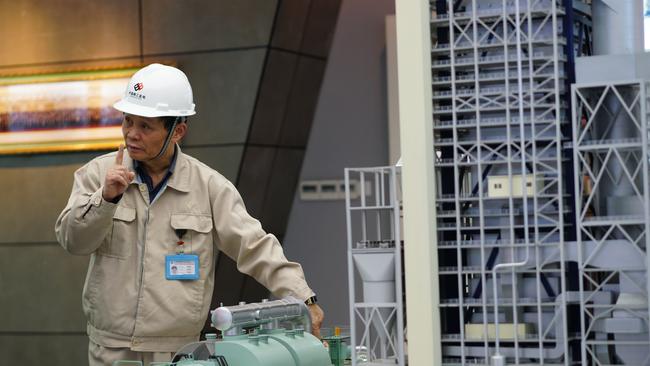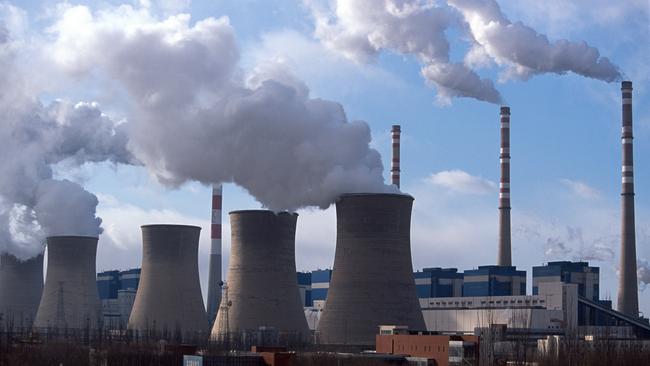Asia’s powerhouse fuels global surge in coal use
Fatigued by bushfire, drought and inclement weather, Australia risks losing perspective on the world’s emissions future.

A series of reports this week makes clear that, led by China, global coal use is surging, not in decline. India, Africa and much of Asia are getting ready to follow.
READ MORE: Coal thirsty China sets off alarms | No escaping the fact China needs coal | China customs holds up $1bn worth of Australian thermal coal | Chinese power stations prefer Indonesian coal
For years environment groups have said China was giving permits to new coal-fired power stations that would not be built. But that confidence has been dispelled in a Global Energy Monitor report, which shows that reductions in coal use in the developed world are being offset many times over by increases in China alone.
Global Energy Monitor, originally called CoalSwarm, started life as a bunch of activists and journalists wanting to put pressure on coal-plant developments in the US. It now tracks China, which it says has the power to make or break the Paris climate goals.
China has been given until 2030 to peak its emissions under the Paris Agreement but on the latest figures that is looking like a pipe dream.

Something radical urgently is needed to reshape the coal-burning trajectory of China and India for there to be any hope of even getting close to achieving the least ambitious targets of the Paris Agreement.
At a nuclear energy conference at the White House this week, US Energy Secretary Rick Perry offered a view from space. “If we look at a satellite image of the globe,” he said, “we see vast tracts of land that are shrouded in darkness. More than a billion people are completely without electricity; they are trapped in energy poverty.”
Perry said the pursuit of a “renewables only” approach to climate change and sustainable development would “lock them into that state maybe forever”.
In discussion with MIT Technology Review early this year, Microsoft founder Bill Gates said further technological evolution was essential.
“If we freeze technology today you will live in a 4C warmer world in the future, guaranteed,” Gates said.

The big discussion playing out around the world gives context to the debate in domestic politics where the Greens have sought to link Australia’s bushfires directly to a lack of domestic action on climate change.
Scott Morrison says the suggestion that individual actions of Australia, accounting for 1.3 per cent of the world’s emissions, are impacting directly on specific fire events, here or anywhere else in the world, is not scientifically credible.
One response is that Australia must lead by example.
But the big picture is that China appears to have stopped reading the climate change script. According to Global Energy Monitor, for the first time since China’s coal-building boom began in the 1980s the coal fleet outside China shrank.
From January last year to June this year, countries outside China decreased their total coal power capacity by 8.1 gigawatts through steady retirements and an ongoing decline in the commissioning of new coal plants. But across the same period China increased its coal fleet by 42.9GW, and as a result the global coal fleet overall grew by 34.9GW.
In short, the increase in China’s coal fired capacity across the 18 month period was almost double Australia’s entire coal fleet with developments underway equal to a further six times Australia’s total.
“As more countries turn away from coal and retire their plants, China’s continued pursuit of coal is increasingly out of step with the rest of the world, and is now effectively driving the ongoing expansion of the global coal fleet,” the report says.
Today, 147.7GW of coal-fired plants are under active construction or under suspension in China and likely to be revived. This is an amount nearly equal to the existing coal-fired power capacity of the EU (150GW).

Some of China’s new coal-fired power development is to replace existing more polluting plants. However, the Global Energy Monitor report says given the amount of capacity under development, China’s central government looks ready to increase its 1100GW coal-fired power cap, as set by its 13th Five-Year Plan to 2020.
Coal and power industry groups are proposing the central government increase total coal-fired power capacity by 20 per cent to 40 per cent to between 1200GW and 1400GW as part of China’s 2035 infrastructure plan. That plan is expected to be released next year.
“The continued growth of China’s coal fleet and consideration of plans to significantly raise the nation’s coal power cap show that while the country is often hailed as a clean energy leader, the momentum of coal power expansion has yet to be halted,” the report says.
According to the report, an increase in China’s coal-fired power capacity is not compatible with the Paris climate agreement to hold warming well below 2C, and “almost certainly forecloses the possibility of China achieving greater emission reductions under the Paris Agreement — currently pegged at peaking carbon dioxide emissions by 2030”.
The UN’s Intergovernmental Panel on Climate Change has found keeping warming well below 2C requires a 58 per cent to 70 per cent reduction in global coal-fired power generation by 2030 below current levels, ramping up to between 85 per cent and 90 per cent by 2035. Global Energy Monitor says China needs to have phased out most of its coal-fired power capacity by 2035 to meet the IPCC scenario.

If China continues to increase total coal-fired power capacity through 2035, its coal-fired power generation alone will be more than three times as large as the global limit determined by the IPCC to keep warming well below 2C.
Global Energy Monitor concludes that China’s continued expansion of its coal fleet is not inevitable but the path that China’s central government chooses could make or break the Paris Agreement’s goals.
There is no doubt that enormous investment will continue in renewable energy sources including solar and wind with an increasing emphasis on storage. China has been held up as an exemplar in renewable energy.
But it is becoming increasingly clear globally that something is still needed for the world to replace the heavy lifting of coal.




Fatigued by bushfire, drought and inclement weather, Australia risks losing perspective on the big trends shaping the world’s carbon dioxide emissions future.